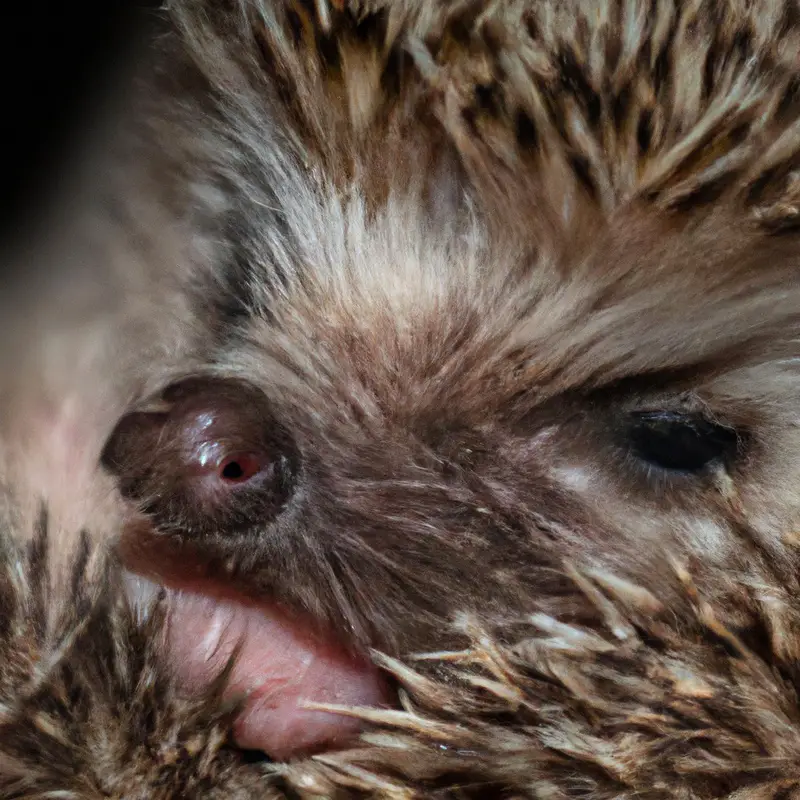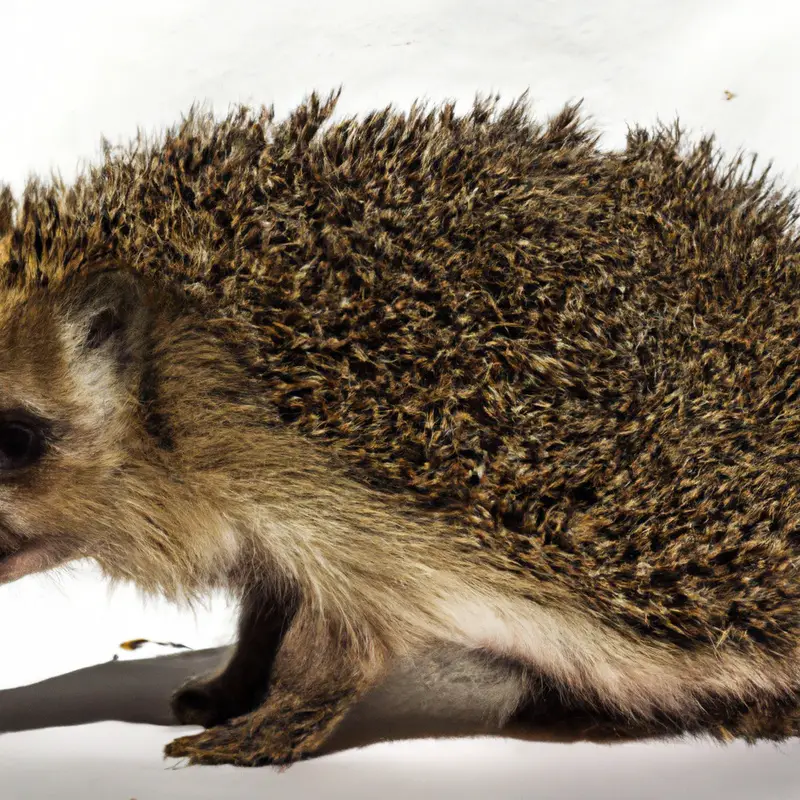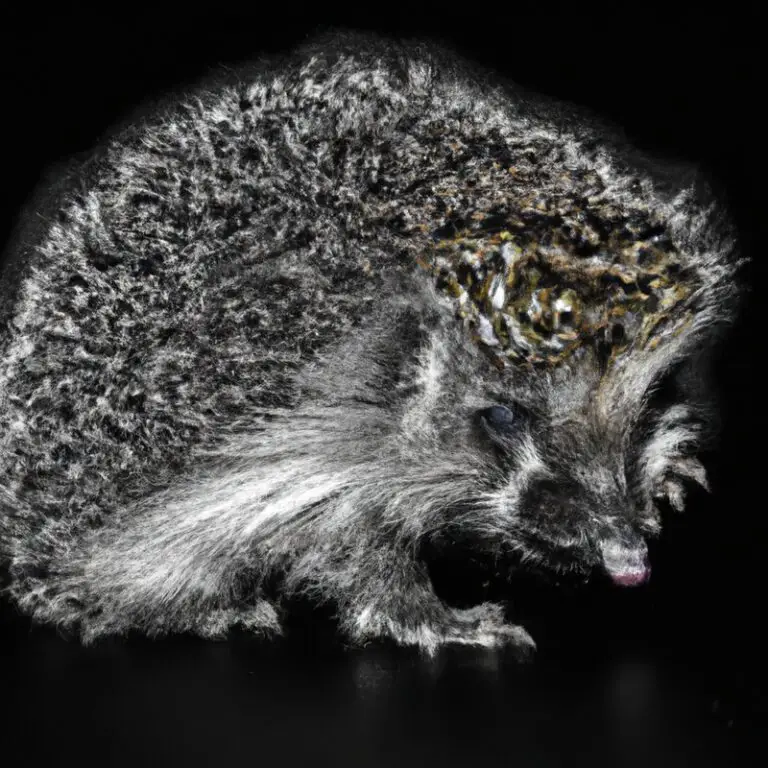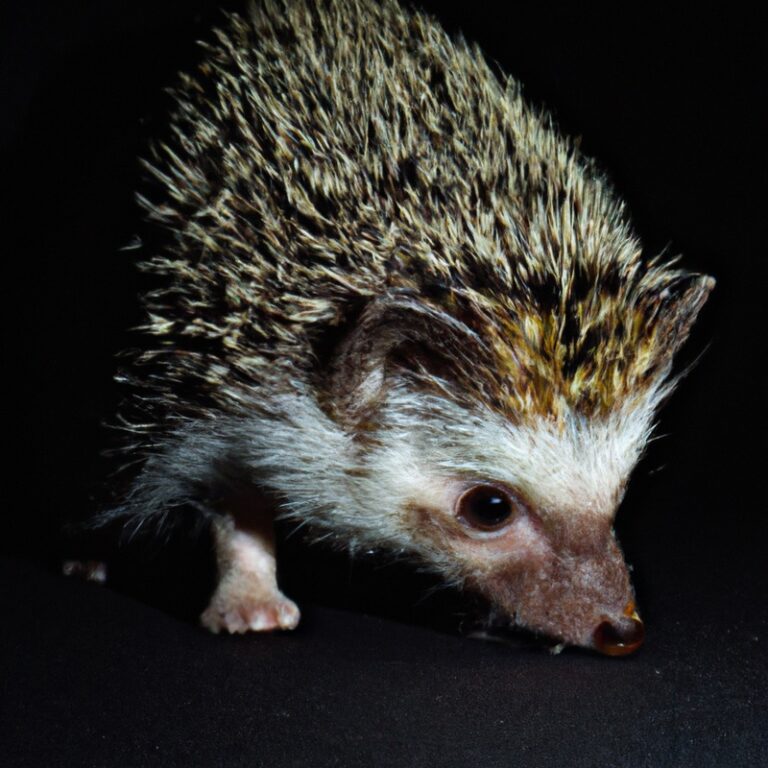How Do Hedgehogs Groom Themselves?
Key Takeaways:
- Hedgehogs groom themselves using their spines and tongue.
- Self-grooming helps hedgehogs maintain a clean and healthy coat.
- Grooming also helps hedgehogs distribute natural oils throughout their spines.
- Hedgehogs have a unique bathing behavior called “anointing” where they cover themselves in new scents.
Have you ever wondered how hedgehogs take care of their grooming needs? These adorable little creatures may look prickly on the outside, but they are masters of self-care.
In fact, grooming plays a vital role in their overall well-being.
From keeping their coats clean and shiny to ensuring their spines are in tip-top shape, hedgehogs have developed unique techniques to maintain their hygiene. In this article, we’ll explore why grooming is so important for hedgehogs, how they go about it, and the tools you’ll need to help them stay fabulous.
So, let’s dive into the world of hedgehog grooming and unravel their secrets!
| Step | Description |
|---|---|
| 1 | Start by licking their paws |
| 2 | Use their paws to clean their face and neck |
| 3 | Roll on the ground to clean their back and sides |
| 4 | Use their spines to remove dirt and debris |
| 5 | Repeat the grooming process as needed |
The Importance of Grooming for Hedgehogs
Grooming is important for hedgehogs to maintain their hygiene and overall health.
Why Hedgehogs Groom Themselves
Hedgehogs groom themselves to maintain cleanliness and hygiene.
Their grooming behavior helps to remove dirt, parasites, and tangles from their quills and fur.
By licking and rolling their bodies, hedgehogs can keep their prickly spines and soft undercoat in good condition.
Grooming also helps them distribute natural oils, which keeps their skin healthy and hydrated.
Regular grooming is essential for hedgehogs as it helps prevent irritation, infections, and the buildup of debris.
It is a natural instinct for them and plays a vital role in their overall well-being.

The Benefits of Regular Grooming for Hedgehogs
Regular grooming is essential for hedgehogs as it offers several benefits.
Firstly, grooming helps to keep their spines clean and free from debris, reducing the risk of infection.
Secondly, it helps to remove dead skin cells and promote healthy skin.
Thirdly, grooming stimulates oil production in their skin, which keeps their coats shiny and well-moisturized.
Additionally, regular grooming allows hedgehogs to maintain proper body temperature and can help them detect and treat any health issues early on.
Overall, a grooming routine is crucial for hedgehog health and well-being.
Understanding Hedgehog Grooming Behavior
Understanding Hedgehog Grooming Behavior is important for the well-being of your pet hedgehog.
When and How Often Do Hedgehogs Groom Themselves
Hedgehogs groom themselves regularly to keep their quills and fur clean and in good condition. They typically groom themselves multiple times per day, often during nighttime hours when they are most active.
The grooming process involves licking their quills and fur, as well as scratching themselves with their claws.
Hedgehogs are meticulous self-groomers and take pride in keeping themselves tidy and well-maintained. It’s a natural behavior that helps to keep them healthy and comfortable.
Typical Hedgehog Grooming Techniques
Hedgehogs have some unique grooming techniques that help them stay clean and healthy. Here are a few typical grooming habits you may observe in hedgehogs:
- Self-anointing: Hedgehogs have a peculiar behavior where they lick and froth at different substances, such as saliva or new scents, and then apply it to their quills. This is known as self-anointing and is believed to help them camouflage their scent or deter predators.
- Bathing: Hedgehogs enjoy exploring water but don’t need frequent baths. Occasionally, they may take a foot bath or a small dip in shallow water, but be cautious as excessive water exposure can lead to health issues. Always consult a veterinarian for advice on bathing your hedgehog.
- Quill maintenance: Hedgehogs have specialized muscles that allow them to spread their quills for cleaning. They will often run their mouth along the length of each quill, removing any debris or dirt. This helps keep their spines clean and can also distribute natural oils to keep them healthy.
Remember, observing and understanding these grooming techniques can help you ensure your hedgehog’s well-being. If you have any concerns about your pet’s grooming habits, consulting a veterinarian is always a good idea.

Physical and Behavioral Indicators of Hedgehog Self-Grooming
Physical and behavioral indicators can help you determine if a hedgehog is grooming itself or not.
Signs that a Hedgehog is Grooming Itself
Hedgehogs exhibit several signs when they are grooming themselves:
- Licking: Hedgehogs use their tongues to lick various parts of their bodies, including their quills and paws.
- Scratching: They may scratch themselves with their hind legs or use their front paws to remove debris from their fur.
- Rolling: Hedgehogs often roll their bodies into a ball-like shape and then unroll, which helps to distribute natural oils and maintain their fur’s health.
- Mouth movements: They may also make chewing or smacking noises while grooming, as they clean their teeth or remove food particles.
- Quill grooming: Hedgehogs may groom their quills individually or run their quills against objects to remove any dirt or debris lodged between them.
These signs indicate that a hedgehog is engaging in self-grooming and is taking care of its hygiene.
Common Behaviors Displayed during Hedgehog Grooming
During grooming, hedgehogs exhibit several common behaviors. They often lick their quills and fur using their long tongues.
They may also scratch themselves with their hind legs or use their front paws to remove debris from their spines.
Hedgehogs may engage in self-anointing, a peculiar behavior where they lick and spread saliva on their spines. This behavior is believed to help mask their scent or provide protection.
Additionally, hedgehogs often roll onto their backs to access hard-to-reach areas, such as their bellies.
These behaviors are essential for hedgehogs to maintain their hygiene and overall well-being.
Tools Required for Hedgehog Grooming
To groom your hedgehog, you’ll need soft-bristled brushes and safe, gentle shampoos.
Soft-Bristled Brushes for Hedgehog Fur
Soft-bristled brushes are essential for grooming hedgehog fur.
They are gentle and won’t harm their sensitive skin.
These brushes help remove loose hair, dirt, and debris, keeping their coat clean and healthy.
Make sure to choose a brush specifically designed for small animals and avoid using human hairbrushes, which can be too harsh.
Regular brushing with a soft-bristled brush will help maintain your hedgehog’s fur and prevent tangles or matting.
Safe and Gentle Shampoos for Hedgehog Bathing
When it comes to bathing your hedgehog, it’s important to use a shampoo that is safe and gentle for their delicate skin. Here are some recommended options:
- Aveeno Baby Wash & Shampoo: This mild and hypoallergenic shampoo is gentle enough for babies, making it perfect for your hedgehog.
- Nootie Tearless Puppy Shampoo: Designed for puppies, this tearless shampoo is gentle and won’t irritate your hedgehog’s eyes.
- Earthbath All Natural Pet Shampoo: Made with natural ingredients, this shampoo is free from harsh chemicals and fragrances that could harm your hedgehog.
- Kaytee Squeaky Clean Critter Shampoo: Specifically formulated for small animals, this shampoo is safe and gentle for hedgehogs.
Remember to only use a small amount of shampoo and rinse your hedgehog thoroughly to avoid any residue on their fur.
Step-by-Step Guide to Hedgehog Grooming
Here’s a straightforward step-by-step guide for grooming your hedgehog.
Preparing the Hedgehog for Grooming
Before grooming your hedgehog, it’s important to prepare them properly.
Start by creating a calm and safe environment, making sure there are no distractions or loud noises.
Next, gather all the necessary grooming supplies, including a soft toothbrush or hedgehog-specific brush, nail clippers, and gentle shampoo.
Ensure the room is at an appropriate temperature to keep your hedgehog comfortable.
It’s also a good idea to handle your hedgehog and let them familiarize themselves with your scent before beginning the grooming process.
By taking these steps, you can ensure a smooth and stress-free grooming experience for your hedgehog.
Brushing the Hedgehog’s Spines and Fur
To brush a hedgehog’s spines and fur, first find a soft-bristle brush that’s suitable for small animals. Gently stroke the spines and fur in the natural direction.
Be careful not to apply too much pressure, as their skin is sensitive.
Regular brushing can help remove loose fur and prevent matting. It’s important to create a calm and comfortable environment for your hedgehog during grooming.
If your hedgehog is resistant to brushing, take it slow and offer rewards to make the experience more pleasant for them.
Bathing a Hedgehog Safely and Effectively
To bathe a hedgehog safely and effectively, start by gathering the necessary supplies: a shallow sink or tub, mild baby shampoo, and a soft toothbrush or soft-bristled brush.
Fill the sink or tub with an inch or two of warm water.
Gently place the hedgehog in the water, supporting its body and avoiding its face.
Use the toothbrush or brush to wash its spines and fur, being careful not to apply too much pressure.
Rinse thoroughly with warm water and pat the hedgehog dry with a towel.
Finally, make sure to provide a warm and quiet space for the hedgehog to fully dry off afterward.
Potential Challenges and Risks in Hedgehog Grooming
Handling Aggressive or Resistant Hedgehogs can be a challenge in hedgehog grooming. Dealing with Skin Irritation or Allergic Reactions is another potential risk that may arise during hedgehog grooming.
Handling Aggressive or Resistant Hedgehogs
Handling aggressive or resistant hedgehogs can be challenging, but there are a few approaches you can take.
1. Start by creating a calm and quiet environment to minimize stress for the hedgehog.
- Use slow and gentle movements when handling them, ensuring you support their body properly.
- Consider using gloves or a towel to protect yourself and provide a sense of security for the hedgehog.
- If the hedgehog is still showing aggression, it’s important to seek professional help from a veterinarian or an experienced hedgehog handler.
Remember, the key is to prioritize the safety and well-being of both you and the hedgehog when dealing with aggression or resistance.
Dealing with Skin Irritation or Allergic Reactions
If your hedgehog experiences skin irritation or allergic reactions, there are a few ways you can help alleviate their discomfort. First, make sure their environment is clean and free from irritants.
Consider using non-toxic bedding materials and avoid strong scents.
Secondly, provide a balanced diet that includes high-quality, hypoallergenic food. This can help minimize allergic reactions.
Lastly, if the irritation persists or worsens, consult a veterinarian specialized in exotic pets for further guidance and potential treatment options.
Always prioritize your hedgehog’s health and well-being.
Frequently Asked Questions
How often should I brush my hedgehog?
Brushing your hedgehog’s quills is an essential part of their grooming routine.
Aim to brush your hedgehog at least once a week to keep their quills in good condition.
Regular brushing helps remove loose quills, dirt, and debris from their coat, preventing matting and tangling.
Remember to use a soft bristle brush and be gentle while brushing.
Building a positive association with brushing from an early age can make the grooming process easier for both you and your hedgehog.
Can I use regular pet shampoos on my hedgehog?
Regular pet shampoos are not recommended for hedgehogs.
Hedgehogs have sensitive skin and using regular pet shampoos can be too harsh and irritating for them.
It is best to use a specially formulated hedgehog shampoo that is gentle and suited for their delicate skin.
These shampoos are available at pet stores or online, and they are designed to keep your hedgehog clean and healthy without causing any harm.
What should I do if my hedgehog refuses to be groomed?
If your hedgehog refuses to be groomed, there are a few things you can try. Start by being patient and understanding, as some hedgehogs are more sensitive or anxious.
Offer treats or rewards during grooming sessions to make it a positive experience.
Gradually introduce grooming tools, such as a soft brush or toothbrush, and let your hedgehog get familiar with them. If all else fails, you can seek assistance from a professional hedgehog groomer or a veterinarian who specializes in exotic pets.
Are there any specific grooming techniques for hedgehogs with long spines?
Hedgehogs with long spines require regular grooming to keep their spines clean and healthy.
However, there aren’t any specific techniques for grooming long-spined hedgehogs.
You can gently brush their spines using a soft-bristled brush or toothbrush.
Additionally, you can use a damp cloth to wipe away any dirt or debris.
Be careful not to apply too much pressure to avoid hurting the hedgehog.
Regular grooming will help maintain the health and appearance of their spines.
Final Verdict
Understanding how hedgehogs groom themselves is essential for their overall health and well-being. Hedgehogs groom themselves to remove dirt, parasites, and maintain their spines and fur.
Regular grooming has several benefits, including the prevention of skin conditions and the bonding between hedgehog and owner.
It is important to recognize the signs of self-grooming and provide the appropriate tools and techniques for hedgehog grooming. By following a step-by-step guide and addressing potential challenges, hedgehog owners can ensure effective and safe grooming sessions.
Remember, a well-groomed hedgehog is a happy and healthy companion.







